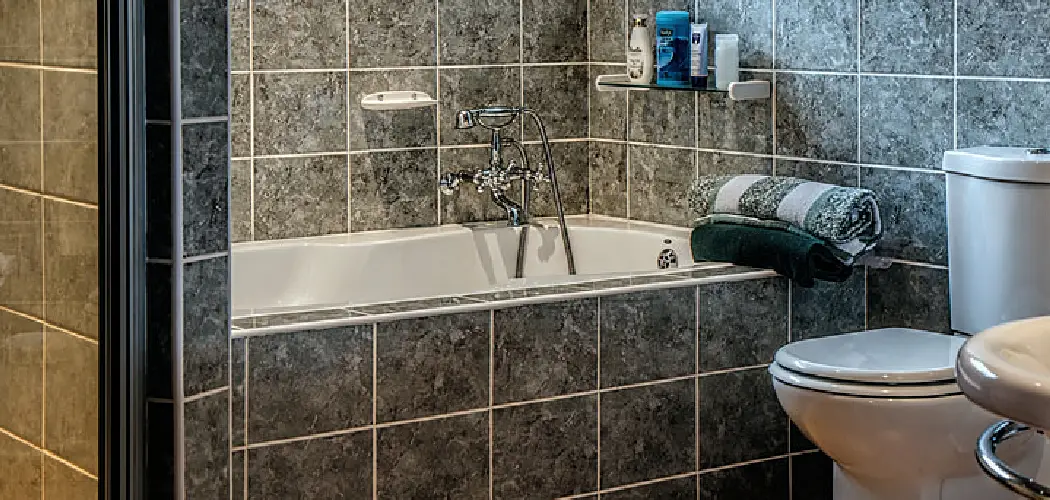Finding yourself in a situation where the water supply is unexpectedly cut off can be daunting, especially when you need to use the toilet. Whether due to plumbing issues, utility maintenance, or emergency situations, knowing how to handle this inconvenience is crucial.
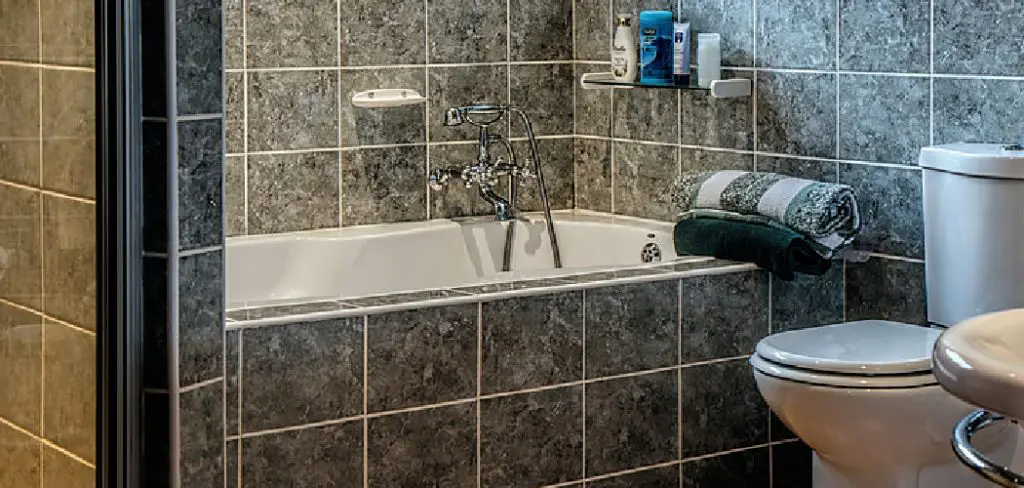
This guide on how to use toilet when water is off will provide practical steps and tips to ensure that you can use your toilet effectively even when water is not available, maintaining hygiene and minimizing discomfort.
Why is the Water Supply Cut Off?
Before we dive into the steps, it is essential to understand the reason behind a water supply being cut off. This knowledge can help you better prepare for such situations in the future.
Plumbing Issues:
Sometimes, issues with your plumbing system can result in a temporary shutdown of your water supply. It could be due to a damaged pipe, clogged drains, or even low water pressure.
Utility Maintenance:
Water companies may also schedule routine maintenance work that requires turning off the water supply in certain areas. These planned outages are usually communicated beforehand.
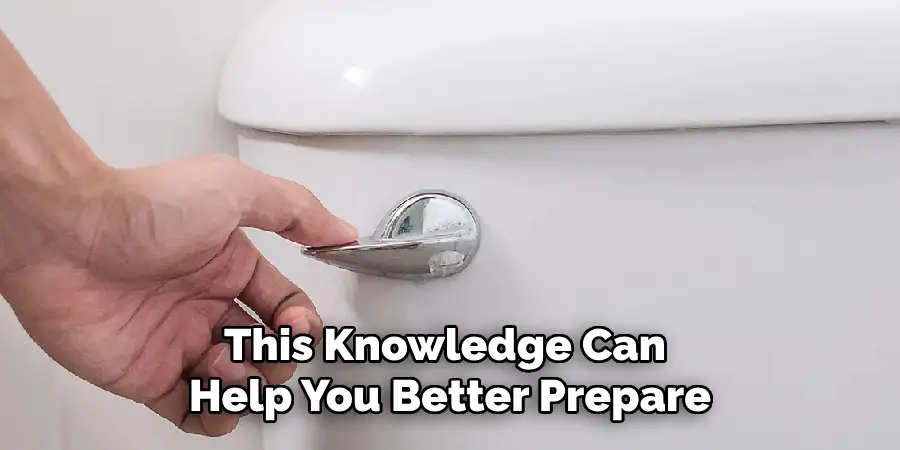
Emergency Situations:
In rare cases, natural disasters like floods or earthquakes can cause disruptions in the water supply. In such scenarios, it is best to follow instructions from local authorities and avoid using the toilet if possible.
What You’ll Need
Before we dive into the steps, here are a few things you will need to have on hand:
A Bucket or Container Filled With Water (at Least 1 Gallon):
Since the water supply is cut off, you will need to manually fill up your toilet tank and bowl with water. Having a bucket or container that can hold at least 1 gallon of water is crucial for this process.
Hand Sanitizer:
Maintaining hygiene is essential when using the toilet, which can be challenging when there’s no running water. Having hand sanitizer on hand will ensure that you can clean your hands after use and prevent the spread of germs.
Extra Toilet Paper:
In situations where the water supply is cut off, it’s always better to have extra supplies on hand. This includes having extra rolls of toilet paper available in case you run out.
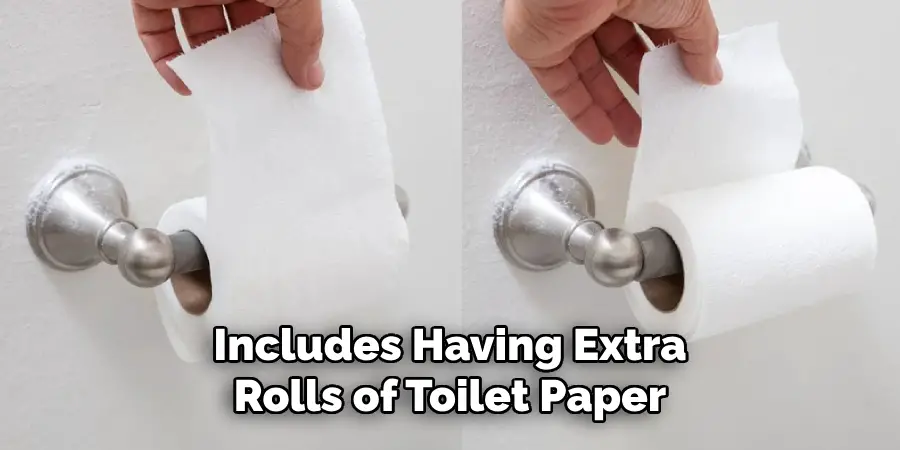
Safety Precautions:
When dealing with a situation where the water supply is cut off, it’s important to take certain safety precautions to ensure your wellbeing and that of others around you.
Use Clean Water:
Make sure the water you are using to fill the toilet tank or bowl is clean. Using contaminated water can pose a health risk and lead to infections. If you are unsure about the quality of the water, refrain from using it.
Avoid Overfilling:
When manually filling the toilet tank or bowl, avoid overfilling to prevent spills and potential water damage. Measure the amount of water carefully to ensure it’s just enough to enable flushing without causing overflow.
Dispose of Waste Properly:
If flushing the toilet is not possible, consider using temporary alternatives such as portable toilets or disposable toilet bags. Ensure these are sealed tightly and disposed of in accordance with local waste management guidelines.
Sanitize Hands:
Always use hand sanitizer or wash your hands with bottled water and soap after using the toilet. This is crucial for preventing the spread of germs and maintaining personal hygiene.
Ventilation:
Ensure that the area around the toilet is well-ventilated to avoid unpleasant odors and to maintain a fresh environment. Open windows or use portable fans if necessary.

By taking these safety precautions, you can effectively manage the use of your toilet even when the water supply is cut off, keeping hygiene and safety at the forefront.
11 Step-by-step Guidelines on How to Use Toilet When Water is Off
Step 1: Prepare the Bucket of Water:
To begin, ensure you have a bucket or container that can hold at least 1 gallon of water. Fill the bucket with water from an alternative source, such as bottled water, a nearby stream, or water reserves if available. This water will be used to manually flush your toilet. Position the filled bucket close to the toilet, making it easily accessible when needed. This preliminary step is crucial as it sets up the necessary resources for the subsequent process and ensures that the flushing can be executed efficiently.
Step 2: Open the Toilet Tank:
Carefully remove the lid from the toilet tank and set it aside in a safe place where it won’t get damaged. This step allows you to access the internal mechanisms of the toilet, which are crucial for the flushing process. By opening the tank, you will be able to pour water directly into it, ensuring that the toilet can be flushed manually. Be cautious when handling the tank lid, as it is typically made of porcelain and can be fragile.
Step 3: Close the Toilet Flapper:
As you open the toilet tank, you will see a rubber flap covering the hole at the bottom. This rubber flapper is responsible for releasing water from the tank into the bowl when you flush your toilet. To prevent any accidental flushing during this process, ensure that you push down on the rubber flapper to seal it shut. This step will also prevent any water from seeping into your toilet bowl before you are ready to flush.
Step 4: Pour Water Into the Tank:
Take the bucket of water and pour it directly into the toilet tank. Pouring slowly will allow the water to fill up the tank without overflowing. Be mindful not to pour too much water at once as this can cause a mess. Depending on your toilet’s size, you may need more than one bucket of water to fill up the tank fully. You can also use the container to scoop and pour water into the tank if a bucket is not available.
Step 5: Remove Your Hand From Flapper:
After pouring water into the toilet tank, remove your hand from the flapper, allowing it to open and release water into the bowl. This step will mimic a regular flush, and you should notice that the water level in your toilet bowl has risen significantly. It is crucial to note that the force of gravity will not be able to flush the waste effectively, so proceed to the next step. You can use the bucket to pour a little more water into the tank if needed.
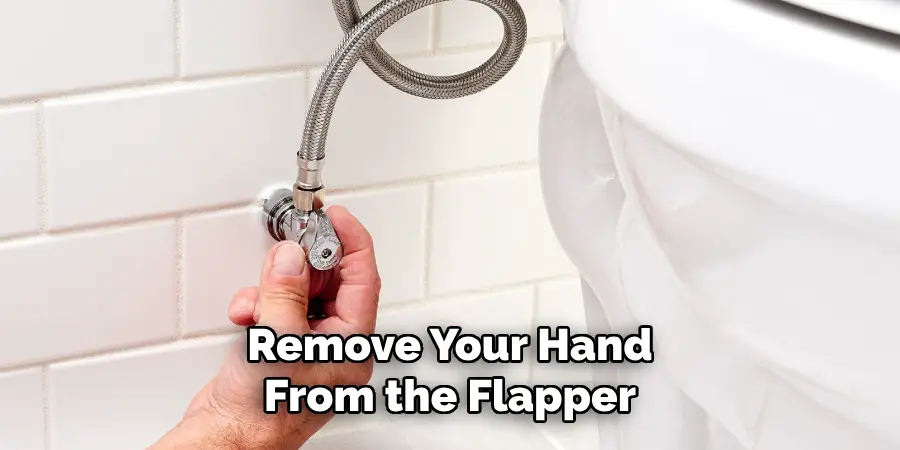
Step 6: Flush Your Toilet:
Now that you have filled up the toilet tank with water and released water into the bowl, it’s time to flush. To do this, pull down on the toilet handle as you usually would for a regular flush. The only difference is that instead of relying on running water, you are using manually poured water from the tank for flushing. As a result, you may need to hold down the handle until all the water has been flushed out of the bowl. Once done, place your hand back onto the flapper to prevent any residual water from flowing into your bowl.
Step 7: Refill Your Bucket:
After flushing your toilet, it’s essential to prepare for any subsequent uses by refilling your bucket with water. Locate an alternative water source, such as bottled water, a nearby stream, or stored water reserves, and fill your bucket again with at least 1 gallon of water. Keeping the bucket filled and easily accessible ensures that you are ready to manually flush your toilet again if needed. This proactive step will save time and reduce inconvenience during a situation where the water supply remains disrupted.
Step 8: Clean Your Hands:
Maintaining proper hygiene is essential when using the toilet, especially in situations where there’s no running water. After flushing your toilet, make sure to use hand sanitizer to clean your hands thoroughly. If possible, avoid touching any surfaces while handling the bucket and other equipment to prevent contamination.
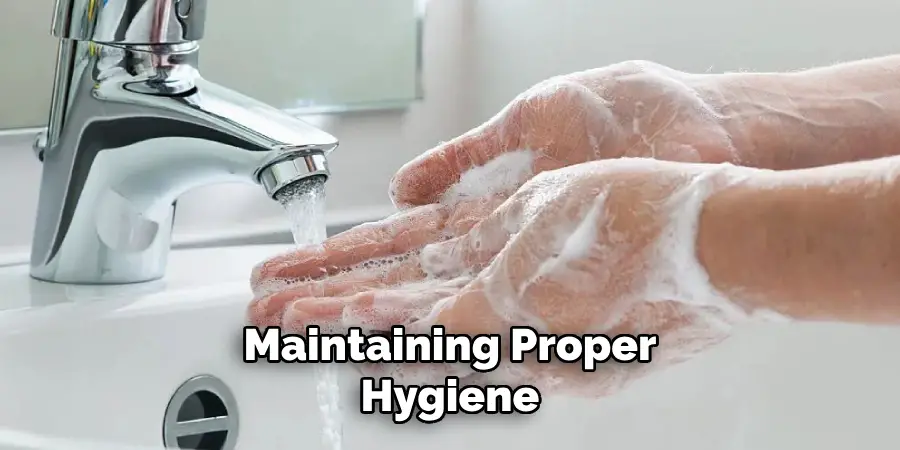
Step 9: Dispose of Waste Responsibly:
Properly disposing of waste is crucial for maintaining a clean and sanitary environment, especially during emergencies or disruptions in the water supply. Consider using minimal amounts of toilet paper and disposing of it in a separate trash bag instead of flushing it down the toilet. This step will help prevent clogs and backups in your plumbing system.
Step 10: Continue Monitoring Your Water Supply:
In instances where the water supply remains disrupted, it’s essential to monitor any changes or updates from your local water provider. Stay informed and conserve water wherever possible to ensure that you have enough for essential needs, such as flushing toilets.
Step 11: Revert to Regular Toilet Usage:
Once your water supply is back up and running, it’s time to revert to regular toilet usage. Remember to flush out any remaining water in the tank manually and replace the lid carefully. You can also refill the tank with clean water if needed. It’s always a good idea to clean and disinfect your toilet after manual flushing before using it regularly again. By following these step-by-step guidelines on how to use toilet when water is off when there is no running water, you can effectively manage emergencies and disruptions in your water supply. Remember to stay informed, conserve water, and practice good hygiene during these situations.
Additional Tips
- If possible, consider purchasing a portable camping toilet for emergency situations where the water supply may be disrupted for an extended period.
- Store extra water reserves for emergencies, including enough drinking water and sanitation purposes.
- Regularly check and maintain your plumbing system to prevent clogs or leaks that can lead to disruptions in your water supply.
- Educate household members on how to use the toilet manually in case of an emergency situation.
- Consider using alternative methods for disposing of waste, such as composting toilets or portable incinerators, during extended disruptions in the water supply.
- In situations where using a bucket may not be feasible, consider using other containers, such as plastic jugs or pitchers, for manual flushing.
- If you are unable to access clean water for manually flushing toilets, consider digging a temporary pit latrine far away from any water sources and using it for disposal. Remember to cover the pit with soil and properly dispose of waste bags or used toilet paper.
- Keep an emergency kit stocked with essential items, such as hand sanitizer, disinfectant wipes, and garbage bags for proper waste disposal during emergencies.
- Stay informed about your local water supply and potential disruptions by signing up for alerts from your water provider or local government.
- In situations where there may be a prolonged disruption in the water supply, consider rationing the use of water for non-essential purposes to ensure that there is enough for essential needs like flushing toilets.
- During extreme weather events or natural disasters, turn off the main water valve to prevent contaminated water from entering your plumbing system.
- If you experience any issues with your toilet or plumbing system during a water disruption, seek help from a professional plumber to avoid causing further damage.
- Be prepared and have a plan in place for what to do in case of an extended water supply disruption. This could include having emergency supplies, alternative methods for sanitation, and communication plans with household members or neighbors.
Planning for Future Water Outages
Being proactive in planning for future water outages can significantly reduce stress and ensure that basic needs are met during disruptions. Start by creating a water storage plan tailored to the needs of your household. It is recommended to store at least one gallon of water per person per day for a minimum of three days, covering both drinking and sanitation purposes. Use food-grade containers and keep the water in a cool, dark place to preserve its quality.
Investing in water purification tools, such as water filters, purification tablets, or portable purifiers, can be invaluable during extended outages. These tools help ensure that you have access to safe drinking water even when regular supplies are unavailable. Additionally, having a manual pump or hand-crank water filter can assist in accessing water from alternative sources like streams or rainwater collection systems.
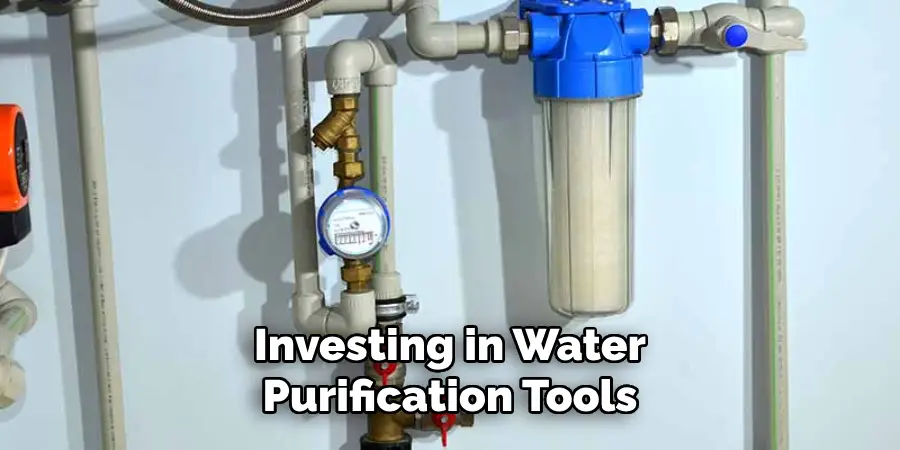
Consider developing a comprehensive emergency plan that includes detailed steps for water conservation, alternative sanitation methods, and waste disposal strategies. Educate all household members on the procedures to ensure everyone is prepared to act efficiently during an outage. It is also wise to compile a list of local resources and contacts, including nearby friends or family members who may have access to water, as well as emergency services and local government agencies.
Lastly, staying informed about your local water infrastructure and potential risks to the supply can help you anticipate and prepare for outages. Regularly maintain and inspect your home’s plumbing system to mitigate any issues that could arise during a water disruption. By taking these steps, you can better ensure the well-being and resilience of your household in the face of future water outages.
Frequently Asked Questions
Q: Can I Use Rainwater or Water From a Nearby Body of Water to Manually Flush My Toilet?
A: Yes, you can use rainwater or water from a nearby body of water for manually flushing your toilet. Collecting and utilizing rainwater is an excellent way to conserve potable water and ensure you have a steady supply for toilet flushing during a water disruption. Before using rainwater, make sure to filter out any debris such as leaves, twigs, or dirt.
For water sourced from rivers, lakes, or streams, it’s advisable to use some form of filtration or treatment to remove any harmful bacteria or contaminants. While this water might not be suitable for drinking or washing, it can efficiently be used for flushing the toilet. Always practice good hygiene when handling and storing this water to prevent any contamination.
Q: How Often Should I Clean and Disinfect My Toilet When Using Manual Flushing?
A: It’s recommended to clean and disinfect your toilet after every use when manually flushing. This will help prevent any odors and maintain a sanitary environment. Use a disinfectant cleaner or bleach solution to thoroughly scrub the inside of the bowl, lid, seat, and handle before rinsing with clean water. Remember to clean any surfaces you may have touched while handling the bucket or other equipment during manual flushing as well.
Q: Can You Flush Solid Waste Manually?
A: Yes, it is possible to flush solid waste manually using a bucket of water. However, it’s important to conserve water whenever possible by only flushing for solid waste when necessary. Consider alternative methods, such as using a portable camping toilet or composting toilet, for disposing of solid waste during extended disruptions in the water supply.
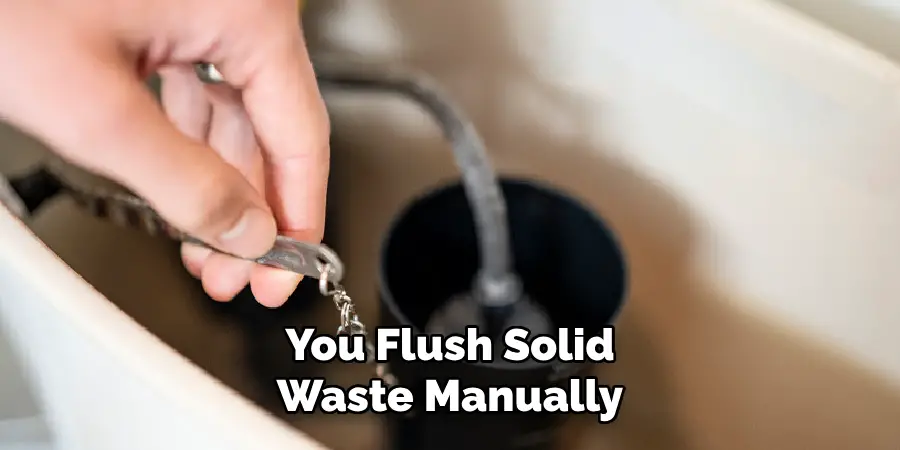
Q: How Should I Dispose of Used Toilet Paper When Using Manual Flushing?
A: It’s best to dispose of used toilet paper in a separate trash bag and throw it away with other household garbage. Flushing toilet paper down the toilet can cause clogs and backups in your plumbing system, so it’s essential to avoid doing so during water disruptions. Consider using minimal amounts of toilet paper and disposing of it in a sealed bag instead of flushing it down the toilet. You can also use alternatives like baby wipes or cloth towels that can be washed and reused if necessary.
Conclusion
In times of water supply disruptions, knowing how to manage toilet use effectively is crucial for maintaining hygiene and comfort within your household. By following the step-by-step guidelines on how to use toilet when water is off and additional tips outlined in this document, you can navigate these challenging situations with confidence. Be proactive in preparing for such emergencies by storing extra water, investing in portable sanitation solutions, and educating household members on manual flushing techniques.
Remember, proper waste disposal and sanitation practices are essential to preventing the spread of diseases and maintaining a healthy environment. Stay informed, practice good hygiene, and be prepared to adapt to varying circumstances to ensure your household remains safe and functional during water supply disruptions.

